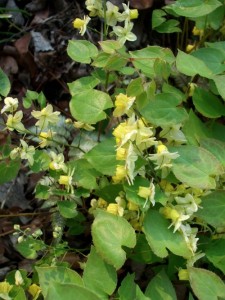With all of the rain, it would be wise to give vegetables and annuals a dose of all-purpose fertilizer. Perennials, too, might use a shot, especially if leaves are turning yellow, a common signal of too much water.
The rain has pushed growth, especially stems and leaves, which may appear stretched and weak.
That certainly was the case with the hardy geraniums, sometimes called cranesbill (Geranium), in the garden. ‘Rozanne’ and ‘Wargrave’s Pink’ got a good haircut over the weekend, even though some of the geraniums had just started to bloom.
The tomatoes, too, are quite tall even though they were planted Memorial Day weekend. We had a lot of late-spring rain in 2009, too, and the tomatoes shot up, seemingly over night. Last spring’s rain also brought several fungus diseases, such as septoria wilt, which I hope does not appear this year on tomatoes. Here’s info on some of the fungus diseases that afflicted tomatoes in Indiana last year:
Take steps to prevent another attack of late blight
Late blight attacks Indiana tomatoes
Devastating tomato disease confirmed from Maine to Ohio
Celebrate June: Plant a perennial

Epimedium, sometimes called barrenwort, is easy to grow and does well in dry shade. (C) Jo Ellen Meyers Sharp
June is Perennial Gardening Month, a celebration of the plants that come back year after year. Here’s are three favorite, under used perennials:
- Epimedium is a clump grower with delicate yellow, pink, red or white flowers in early spring. In fall, the foliage turns a glossy burgundy and stays on the 12-inch tall plant all winter. Sometimes called barrenwort, this is an excellent ground cover for dry shade.
- False indigo (Baptisia) is the 2010 Perennial Plant of the Year. It gets up to 4 feet tall and wide and is an excellent plant for the middle or back of the sun garden. It blooms in May and June with long stalks of blue, yellow, white or purple flowers. The blue-green foliage is the perfect backdrop for later blooming perennials.
- Hardy geraniums, or cranesbill (Geranium). A great, low-growing plant for sunny to partly shady areas. Many have good fall color and can be used as a ground cover.

[…] The rest is here: Indiana gardens get too much rain so celebrate perennial gardening … […]